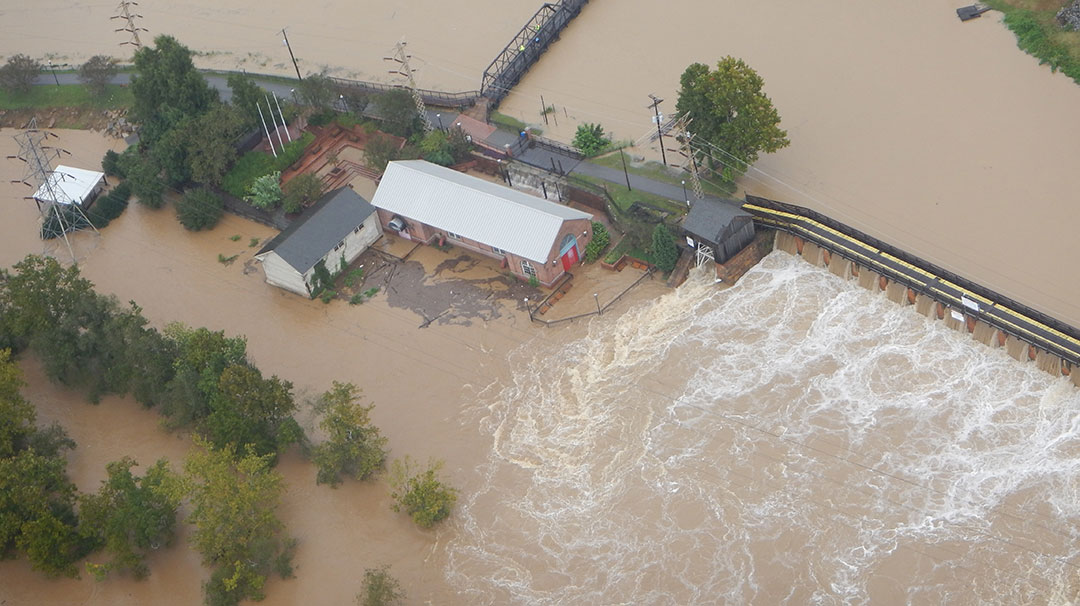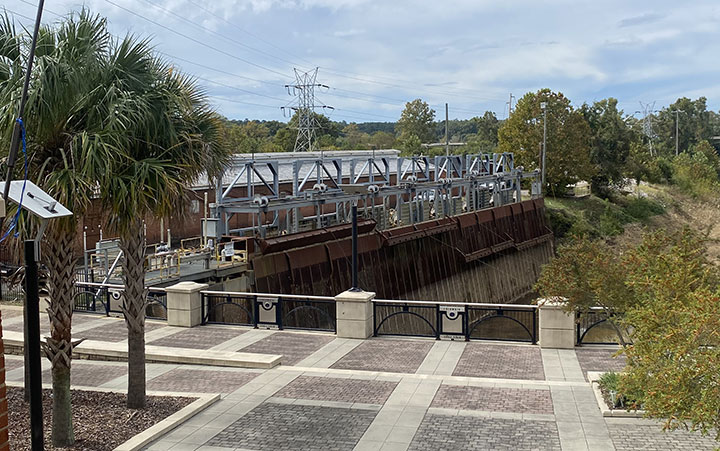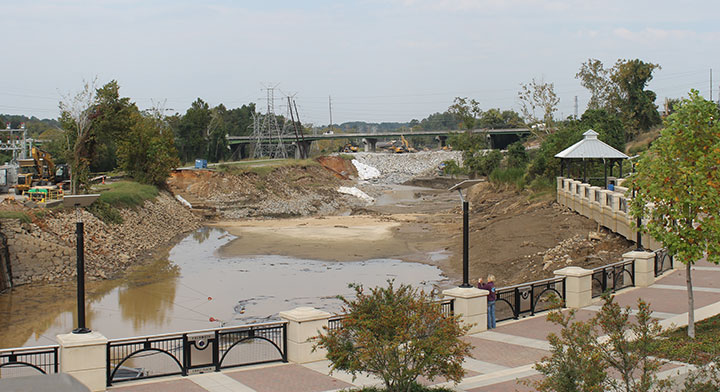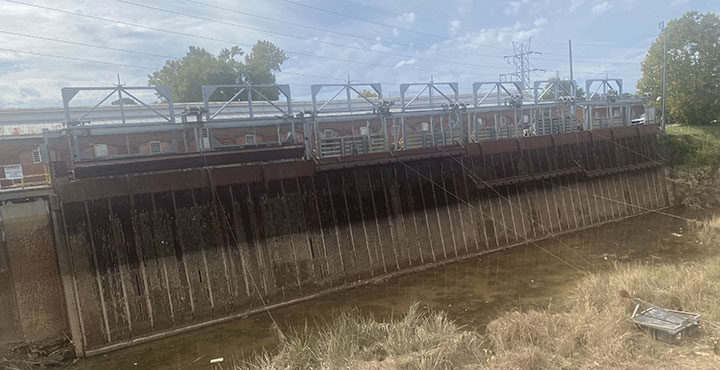Hurricane Joaquin’s flooding in 2015 broke through the hydroelectric plant’s dike, flooding the embankment and much of the surrounding city. (Photo courtesy of city of Columbia/Carolina News & Reporter)
The city of Columbia on Friday announced a plan to repair and replace elements of the city’s canal system — nine years after a historic flood severely damaged the source of much of downtown’s drinking water.
Columbia Water has been providing drinking water using temporary fixes since the city’s 1,000-year flood in 2015. City officials announced a project to replace, modernize and reopen the canal and its adjacent hydroelectricity plant.
“In the aftermath of Hurricane Joaquin, we made a commitment … that we were going to build back our infrastructure,” Assistant City Manager of Columbia Water Clint Shealy told people gathered for a press conference. “Today, we’re on the cusp of honoring that commitment.”
The Columbia Canal Recovery project includes plans to revitalize the drinking water system using a new water intake design. The system will be independent of the 200-year-old canal to protect from future disruptions to the water supply during severe weather.
“We wanted to be in a better position than we were in 2015,” Shealy said. “It’s going to provide even greater security for our water supply.”
The canal’s repairs are made possible by funding from the state and the new $38.2 million from the federal government’s FEMA and HUD. City officials additionally noted efforts from U.S. representatives Lindsey Graham, Jim Clyburn and Joe Wilson from South Carolina.
“It may have taken nine years to get this done, but people are working together,” said Wilson, who spoke at the press conference. “I’m grateful that every level of government, municipal counties, state and federal are working together.”
The Columbia Canal Recovery project’s objectives are to:
- Replace and reopen the upstream head gates for the Broad River
- Remove damaged embankment soil and rebuild the earthen dike
- Conduct an archeological review of the removed soil
- Reopen the hydroelectric plant
- Build a new drinking water intake independent of the canal
In total, the project is estimated to cost $120 million. The new water supply system is the first stage of construction and will begin in December of this year. Shealy said he is working to minimize disruptions and road closures caused by the construction.
“The nature of the work that we’re doing is going to necessitate some closure,” he said. “It’s been a very long road, but we are so happy to be at this point.”
Columbia Mayor Daniel Rickenmann said the announcement is about an investment in the future.
“Progress with the Columbia Canal project highlights that there is hope and recovery following any form of destruction,” Rickenmann said. “It serves as a model of how communities can rebuild stronger and more sustainable from natural events.”
Columbia Mayor Daniel Rickenmann spoke Friday about the city’s plans to fix the canal, a source of drinking water, during a press conference. (Photo courtesy of city of Columbia/Carolina News & Reporter)
The city’s hydroelectric plant has been out of commission since 2015. (Photo by Geri Johnson/Carolina News & Reporter)
Overlooking the storm’s damage from Coble Plaza in 2015 (Photo courtesy of city of Columbia/Carolina News & Reporter)
The Columbia Canal Recovery project includes plans to renovate the inoperable hydroelectric plant to resume generating sustainable energy. (Photo by Geri Johnson/Carolina News & Reporter)






